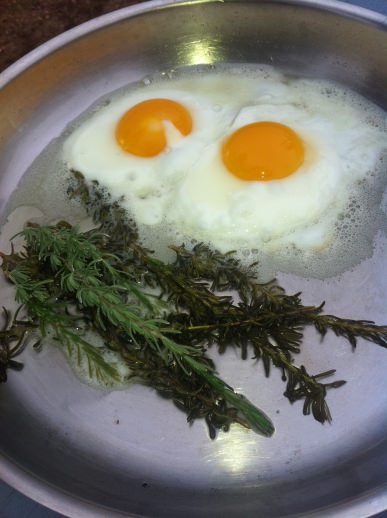 I came home to find my husband mysteriously busy at the kitchen stove with sprigs of lavender in one hand, and a wooden spoon swirling around melted shea butter in a hot skillet in the other. Dinner was an experiment last night, but I’ll let him speak:
I came home to find my husband mysteriously busy at the kitchen stove with sprigs of lavender in one hand, and a wooden spoon swirling around melted shea butter in a hot skillet in the other. Dinner was an experiment last night, but I’ll let him speak:
Since we have plenty of shea butter on hand for my wife to make fresh batches of hard lotion bars, I decided to swipe a couple tablespoons of the shea to test in our kitchen.
I like soft, fried eggs and I normally cook them in a pan with butter or a half-tablespoon of coconut oil. This time I used some of Renee’s very white looking shea butter. I also added a few sprigs of lavender from the garden for a slightly wild and elevating flavor.
The first thing I noticed was that this butter can get much hotter in the pan without it beginning to smoke. Normally, if it is a dairy butter, I have to watch closely as the butter can turn quickly from golden brown to a smoked burned state. In comparison, shea butter seems to withstand a much higher cooking temperature and never got close to burning.
Secondly, and the most important observation, is how it tasted. I served up the eggs, and immediately, on our first bite of the eggs, both my wife and I agreed that the viscosity was very pronounced. Both butter and coconut oil give each their own distinct taste, but they dissipate immediately in the mouth. The shea butter, however, lingers long in the mouth after finishing the bite and overwhelms the fine taste of soft eggs. We both commented that it reminded us of flax seed oil and cod liver oil – not a good combo for light dinner fare.
Conclusion: I’m not ready yet to switch to cooking with shea butter, but I think it could find its place in any food requiring high and sustained heat that needs a robust complementary flavor.



